讲座:Light-matter Interactions in 2D Materials and Device Applications
阅读次数: 发布时间:2019-04-08Abstract
Our research interests are mainly focused on the light-matter interactions in 2D materials in the forms of nonlinear light absorption, light modulation (amplitude, phase and polarisation), photo-electrical conversion, wave-guiding and polaritonic behaviours. This talk will give an overview of photonic and optoelectronic device applications based on these optical phenomena in 2D materials [1-5].
Firstly, to overcome the limit light absorption in graphene and obtain large nonlinear optical modulation depth, we developed a serial of new saturable absorbers based on graphene heterostructures and other 2D materials, including graphene/Bi2Te3 [6-8], black phosphorus [9-11] and self-doped plasmonic 2D Cu3-xP nanosheets [12] as well as 2D halide perovskite [13-14]. Secondly, in order to fabricate improved graphene photodetectors working in different spectral ranges, we integrated graphene with other 2D materials with variant electronic structures, for example, graphene/perovskite for visible light detection [15-16], graphene/MoTe2 and graphene/Cu3-xP for near infrared light detection [17-18], and graphene-Bi2Te3 for broadband infrared light detection [19-20]. We show how photo-gating effect plays a significant role to amplify the photocurrent in the photodetectors as well solar cell device [21]. By fine tuning or aligning the electronic structure, we are able to engineer the depletion width in 2D material heterostructures, such as graphene/WS2, MoS2/WS2 and WSe2/WS2 heterojunction [22-26], monolayer-bilayer WSe2 heterojunction [27] and 2D perovskite p-n junction [28], so as to achieve higher photo-responsivity and large photo-active area.
Lastly, the THz light modulations associated with plasmonic excitation in graphene/Bi2Te3, topological insulator Bi2Te3, graphene nanoribbon and 3D graphene were investigated using either spectroscopic or real space imaging techniques [29-32]. We developed a surface plasmon resonance (SPR) sensor using antimonene materials, and found that such a sensor using new, more sensitive materials to look for key markers of disease in the body increased detection by up to 10,000 times. [33] In particular, we update our recent progress on the observation of anisotropic and ultra-low-loss polariton propagation along the surface of natural vdW material α-MoO3.[34] We visualized and verified two new forms of phonon polaritons with elliptic and hyperbolic in-plane dispersion, which have been theoretically predicted but never experimentally observed in natural materials before.
In summary, the advances of optical researches in 2D materials may pave the way for the next generation photonic and optoelectronic device applications.
Keywords: graphene; photonics; optoelectronics, 2D materials, polariton.
References
Bannur Nanjunda Shivananju et al., Advanced Functional Materials, 2017, 27 (19): 1603918.
Sathish Chander Dhanabalan et al., Nanoscale, 2016, 8: 6410 – 6434.
Sathish Chander Dhanabalan et al., Advanced Science, 2017, 4(6): 1600305.
Xiang Qi et al., Small, 2018, 14 (31), 1800682.
Babar Shabbir et al., Applied Physics Review, 2018, 5, 041105.
Haoran Mu et al., ACS Photonics, 2015, 2 (7) : 832–841.
Fengnian Xia et al., Journal of Selected Topics in Quantum Electronics, 2016, 23(1): 8800105.
Zhiteng Wang et al., Optical Engineering, 2016, 55(8): 081314.
Haoran Mu et al., Advanced Optical Materials, 2015, 3: 1447-1453.
Yu Chen et al., Optics Express, 2015, 23 (10) : 12823-12833.
Yingwei Wang et al., Applied Physics Letters, 2015, 107: 091905.
Zeke Liu et al., Advanced Materials, 2016, 28: 3535–3542.
Jingying Liu et al., ACS Nano, 2016, 10 (3): 3536–3542.
Pengfei Li et al., ACS Applied Materials and Interfaces, 2017,9 (14): 12759–12765.
Yusheng Wang et al., Advanced Optical Materials, 2015, 3: 1389.
Pengfei Li et al., Journal of Physics D: Applied Physics, 2017, 50 (9): 094002.
Wenzhi Yu et al., Small, 2017, 13 (24): 1700268.
Tian Sun et al., Small, 2017, 13 (42): 1701881.
Hong Qiao et al., ACS Nano, 2015, 9 (2): 1886–1894.
Jingchao Song et al., Advanced Electronic Materials, 2016, 2(5): 1600077.
Yusheng Wang et al., Advanced Materials, 2017, 29(18): 1606370.
Changxi Zheng et al., ACS Nano, 2017, 11(3) : 2785–2793.
Yunzhou Xue et al., ACS Nano, 2016, 10: 573-580.
Zhipeng Li et al., ACS Applied Materials and Interfaces, 2017, 9 (39): 34204-34212.
Zai-Quan Xu et al., ACS Nano, 2015, 9 (6) : 6178–6187.
Guoyang Cao et al., Nano Energy, 2016, 30: 260-266.
Zai-Quan Xu et al., 2D Materials, 2016, 3 (4): 041001.
Qingdong Ou et al., Advanced Materials, 2018, 30 (15), 1870102.
Qingyang Xu et al., Light: Science & Applications, 2017, 6 : e16204.
Jian Yuan et al., ACS Photonics, 2017, 4 (12) : 3055–3062.
Yao Lu et al., JOSAB, 2016, 33(9): 1842-1846.
Jingchao Song et al., ACS Photonics, 2016, 3 (10): 1986–1992.
Tianyu Xue et al., Nature Communications, 2019, 10:28.
Weiliang Ma et al., Nature, 2018, 562 (7728), 557.
Selective covers
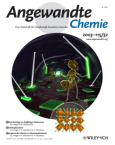
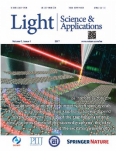
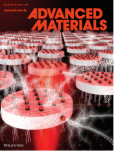
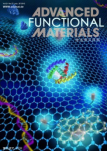
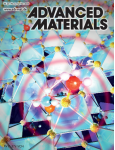
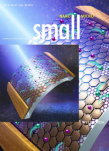
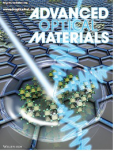
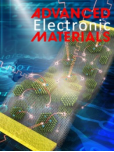

Short biography:
Dr. Qiaoliang Bao received his Bachelor (2000) and Master (2003) degree from School of Materials Science and Engineering, Wuhan University of Technology, and Ph. D degree from Department of Physics, Wuhan University (2007). From 2006 to 2008, he studied at Nanyang Technological University as a visiting student and research associate. From 2008 to 2012, he worked as a postdoctoral fellow in Graphene Research Centre, National University of Singapore (NUS). He was enrolled into China Thousand Youth Talent Program in 2012. He obtained ARC Future Fellowship in 2016 and is now a tenured Associate Professor at Department of Materials Science and Engineering, Monash University, Australia. He is one of the 20 lead Chief Investigators of the Australian Research Council Centre of Excellence in Future Low-Energy Electronics Technology (ARC COE FLEET). He is also one of Chief Investigators in ARC Industry Transformation Hub for Nanoscience based Construction Material Manufacturing. He has authored or co-authored more than 190 refereed journal articles with more than 20,000 total citations and an H-index of 60 (Google Scholar). Dr. Bao has >30 highly cited publications according to the latest data in Web of Science, and he is listed as 2018 Highly Cited (HiCi) researcher by Clarivate Analytics. His research involves the investigation of waveguide-coupled 2D semiconductors and polariton-coupled 2D materials and devices, focusing on the effect of confined-space light-matter interactions on the transport of electrons or other quasi-particles such as plasmon polariton, exciton polarition and phonon polariton.
时间:4月12日(周五)15:30
地点:笃行楼102会议室
